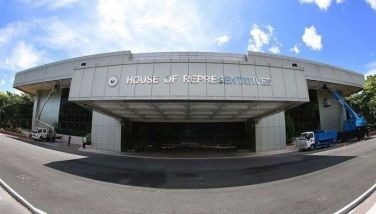Dictators ousted and placed on trial

Two weeks ago in Dakar, Senegal a special inter-African court appointed by the African Union wound up the trial of Hissene Habre, the former president/dictator of Chad (1982-1990), for crimes against humanity, war crimes and torture. International legal observers say the prosecution, which urged life imprisonment for the dictator and confiscation of all of his property, has made a strong case by presenting almost 100 witnesses and corroborating documents. The verdict is expected in May.
Habre, now 73, is the third notorious dictator to be ousted, then arrested and haled to court for human rights violations and other crimes, whose periods of dictatorship coincided in part with that of Ferdinand E. Marcos in the Philippines (September 1972- February 1986). The other two were Augusto Pinochet of Chile (September 1973-1990) and Jorge Rafael Videla of Argentina (1976-1981).
Arrested in Britain and tried in Chile, Pinochet died, at 91, on Dec. 10, 2006. His trial wasn’t completed, but his case assumed worldwide significance. Indicted by Spain’s magistrate Balthazar Garzon in 1998 under the International Criminal Court’s mandate, he was arrested six days later in London. For the first time, several European judges, applying the principle of “universal jurisdiction,” declared themselves competent to judge crimes committed by former heads of state. Pinochet opted to be tried in Chile, and Britain let him go back there.
On the other hand, Videla was successfully meted multiple life terms by Argentina courts. First sentenced to life in 1985 for his “dirty war” crimes, he was pardoned by President Carlos Menem in 1990. Rearrested in 1998 for kidnapping babies born in detention, he was sentenced to life anew in 2010. Then in 2012 he was found guilty of kidnapping and sentenced to 50 years more. At 87, Videla died in prison on May 17, 2013.
It’s relevant to cite these facts in relation to this week’s observance of the 30th anniversary of the so-called EDSA People Power Revolution that ousted the Marcos dictatorship. Why? Two reasons:
First, all the four dictatorships had the backing of the United States (Habre’s regime was also backed by France, Chad’s former colonizer);
Second, compared with what the peoples of Chile, Argentina and Chad have attained, the Marcos HRV victims and the Filipino people obviously have gotten the shorter end of justice.
No similar criminal charges have been brought by the government against Marcos or his martial law minions. Only a civil class suit for HR violations was filed successfully against him in a Hawaii court, chiefly through Filipino lawyers using an old tort law. But at the hearings only American lawyers were allowed to appear for the plaintiffs, which subsequently created disagreements and animosity between Filipino and American lawyers.
Why in Hawaii? It was there where the US government brought the Marcos family, after US helicopters had plucked them out of Malacañang on Feb. 25, 1986. Thousands of angry citizens were then massing before the palace (later breaking through the gates and pouring into the buildings).
US intervention not only rescued the Marcoses from the onrushing mass of people. It also deprived the Filipino people of their right to arrest and prosecute the dictator and exact justice, apt punishment for his crimes against them.
Marcos died in 1989, five years before the Hawaii court ruled that his martial-law regime indeed violated the human rights of the 9.536 plaintiffs – mainly on the strength of the direct testimonies of several victims. Not long after, President Ramos allowed his heavily embalmed body to be returned to the Philippines, along with the family. It has since been displayed in a mausoleum in Batac, as the family and Marcos loyalists unceasingly maneuver to have it interred at the Libingan ng mga Bayani.
The Hawaii court awarded the plaintiffs $2 billion in monetary compensation, to be taken from the Marcoses’ estimated $10-billion plunder stashed in secret bank accounts abroad, that have to be recovered.
That award remains a pie in the sky for the Marcos victims. Although the government claims to have recovered some $4 billion of the family’s loot, under the 1988 Comprehensive Agrarian Reform Law, any money recovered should be used to fund agrarian reform. But after 27 years, the CARP remains uncompleted and largely a failure.
It took 13 years since 2001 before Congress passed a law – RA 10368 – that provides for “reparation and recognition” of human rights violations victims of the dictatorship. Only P10 billion equivalent of the recovered Marcos loot is allocated for compensation and administrative expenses of the compensation board. Over 75,000 individuals have filed applications for reparation. Only after having ascertained who should be compensated would the victim-claimants be able to receive the award, possibly after 2018.
The recent disclosure of a book published in 1986 by the 13th US Air Force at the former Clark Air Base in Pampanga claims that the Marcoses’ “evacuation” to Hawaii had the explicit concurrence of Cory Aquino. The book, reportedly written by David L. Rosmer, then chief of the 13AF’s Office of History, is quoted in a news report thus:
“For her part, Mrs. Aquino has made no secret of the fact that she wanted the US to engineer Marcos’ departure from the country and that she conveyed that message to the American authorities [in Washington] who approved the evacuation.”
Is this true? Why would Mrs. Aquino have wanted to save the Marcoses and their minions from having to face the Filipino people and answer for their crimes? A lot more about “EDSA I” and US role in it have to be dug up and made public – in the interest of truth and justice.
* * *
Email: [email protected]
- Latest
- Trending




























